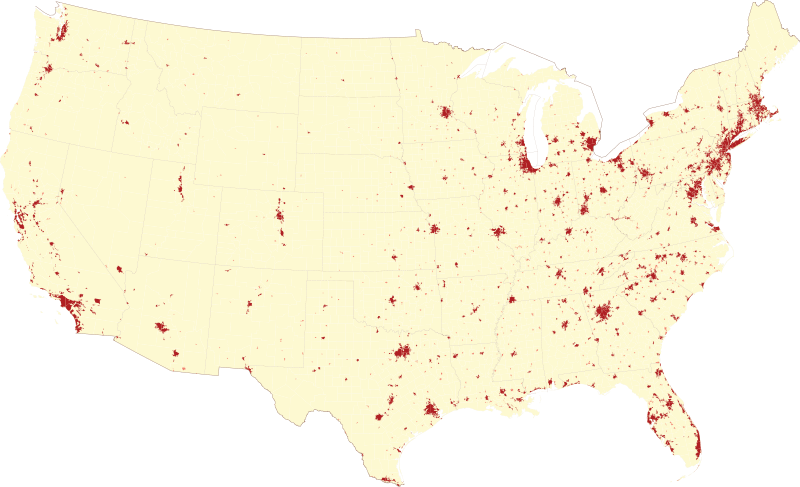United States urban area
Urban areas in the United States are defined by the U.S. Census Bureau as contiguous census block groups with a population density of at least 1,000/sq mi (390/km2) with any census block groups around this core having a density of at least 500/sq mi (190/km2). Urban areas are delineated without regard to political boundaries. The census has two distinct categories of urban areas. Urbanized Areas have populations of greater than 50,000, while Urban Clusters have populations of less than 50,000 but more than 2,500. An urbanized area may serve as the core of a metropolitan statistical area, while an urban cluster may be the core of a micropolitan statistical area.

An enlargeable map showing urban areas and urban clusters of the contiguous United States, based on the 2000 census.
See also
- Outline of the United States
- Index of United States-related articles
- Book:United States
- Geography
- United States
- United States Census Bureau
- United States Office of Management and Budget
- Primary census statistical area
- United States urban area
References
- ↑ "Metropolitan and NECTA Divisions published by CES". U.S. Bureau of Labor Statistics. January 28, 2011.
- ↑ "May 2009 Metropolitan and Nonmetropolitan Area Definitions". U.S. Bureau of Labor Statistics. August 16, 2010.
External links
- United States Census Bureau
- U.S. Census Bureau: List of Populations of Urbanized Areas
- U.S. Census Bureau: List of Populations of Urban Clusters
- US Census Urban and Rural Classification
- Maps of urbanized areas
This article is issued from Wikipedia - version of the 7/21/2016. The text is available under the Creative Commons Attribution/Share Alike but additional terms may apply for the media files.
